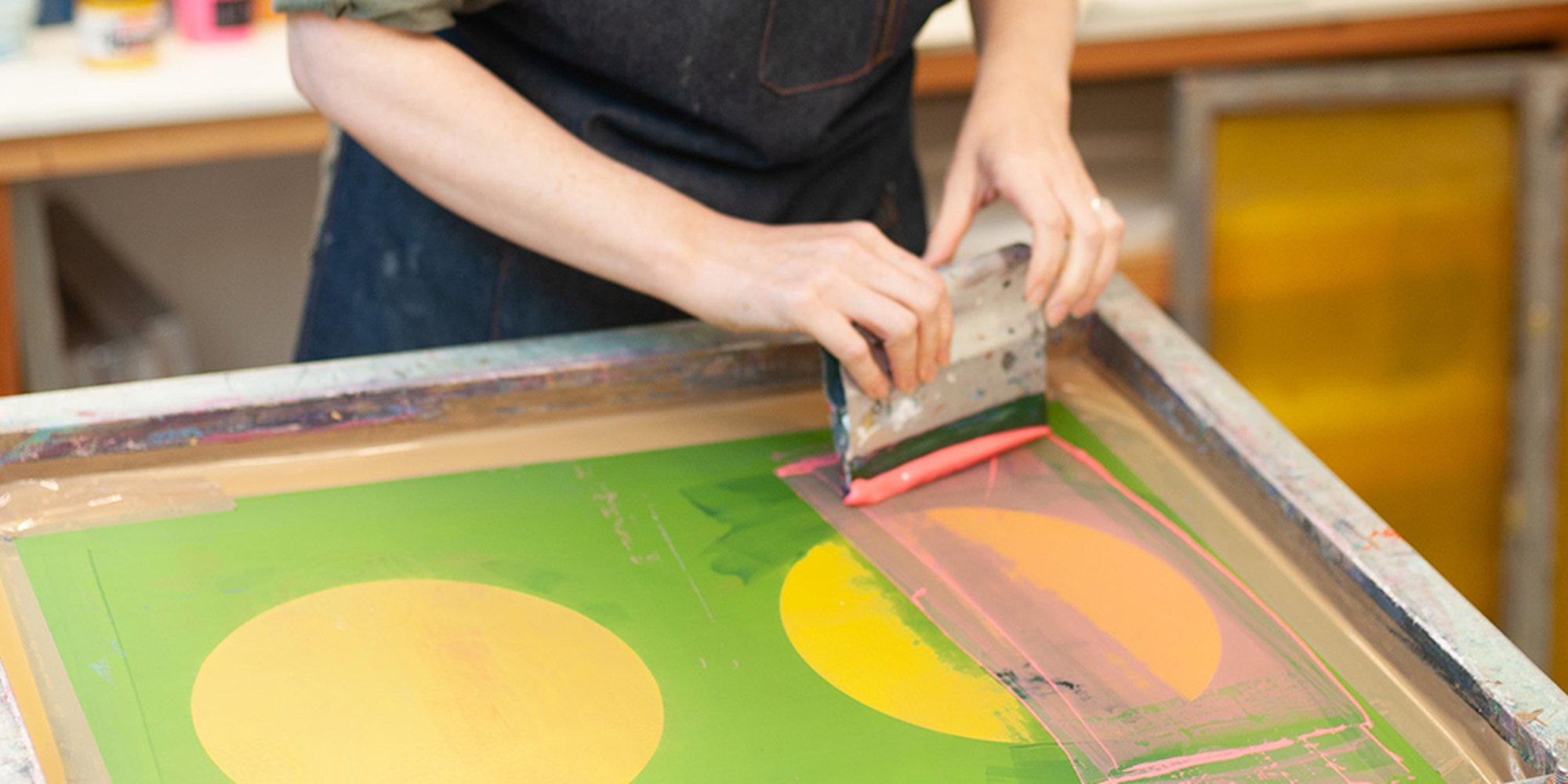ChatGPT said: What customers are saying in 10:9 Design reviews: insights
The Necessary Overview to Recognizing Screen Printing and Its Versatile Makes use of
Screen printing has an abundant background that goes back to old times, advancing right into an innovative strategy utilized across different markets today. This guide explores the complexities of the screen printing process, detailing its applications in style, home, and marketing decoration - 10:9 Design reviews. Comprehending these principles can open up creative possibility for both industrial and creative tasks. The complying with areas will certainly reveal necessary ideas and techniques to boost one's screen printing ventures
The Background of Screen Printing
Screen printing has roots that map back centuries, its evolution mirrors the technical and creative innovations of different societies. Coming from old China, the strategy was originally made use of for embellishing fabrics and later spread to Japan, where it ended up being integral to Ukiyo-e woodblock printing. The method shifted to Europe in the 18th century, where it acquired appeal amongst artisans and industrial printers. The invention of image emulsion in the 20th century reinvented screen printing, enabling more complex styles and higher performance. Artists like Andy Warhol additionally propelled its appeal, making use of the tool to create iconic jobs that combined commercialism and great art. By the late 20th century, screen printing had established itself as a flexible method, utilized in vogue, advertising, and great art. Today, it remains to evolve, integrating digital technology and broadening its applications throughout different sectors.
The Screen Printing Refine Explained
Screen printing changes imaginative visions into tangible designs through a series of accurate steps. A picture is developed and after that transferred onto a screen, usually made of fine mesh textile stretched over a frame. A light-sensitive solution is related to the screen, which is exposed to light, setting in areas not covered by the image. After washing out the unhardened emulsion, a stencil is created.
Next, the screen is placed over the substrate, whether it be textile, paper, or one more material. Ink is then pressed via the open areas of the stencil using a squeegee, depositing the design onto the substratum listed below. This process can be repeated for numerous colors, requiring different screens for every hue. Finally, the published product is cured utilizing warmth to guarantee the ink sticks correctly, causing a durable, lively design on-line.
Kinds of Screen Printing Techniques

Furthermore, specialty strategies, such as discharge screen printing, remove dye from the material to produce softer prints, while aluminum foil screen printing uses metal foil to achieve a glossy coating (10:9 Design Abilene). Each technique supplies unique characteristics, catering to numerous innovative needs and manufacturing scales, inevitably broadening the opportunities within the screen printing domain name
Applications of Screen Printing in Numerous Industries

Furthermore, the signage and advertising and marketing industries make use of screen printing for producing attractive displays and sign and print banners. This approach enables for vibrant shades and elaborate styles that record attention. In electronics, screen printing is used for using conductive inks to circuit boards, necessary for component connections. Additionally, the home décor sector welcomes screen printing to create distinct designs on textiles and wall surface art. In general, screen printing acts as a vital tool throughout varied areas, boosting products with individualized and aesthetically attractive graphics.
Tips for Successful Screen Printing Projects
While carrying out a screen printing job, mindful attention to detail can substantially boost the last outcome. Choosing top notch products is essential; this includes the screen, inks, and substrates. Using suitable mesh counts can affect ink deposition and detail resolution. Preparation is just as vital; extensive cleaning of screens and proper exposure times ensure crisp prints.
Next off, exact enrollment is important for multi-color prints. Using positioning tools can help achieve precise layering. Additionally, testing prints on scrap products before manufacturing aids recognize possible problems without squandering resources.

Frequently Asked Concerns
What Products Are Finest for Screen Printing on Textile?
Cotton and polyester blends are perfect for screen printing on fabric as a result useful reference of their durability and ink absorption. In addition, specialty materials like silk or canvas can generate unique textures and surfaces, enhancing the general design high quality.
How Do I Tidy and Maintain Screen Printing Tools?
To maintain and cleanse screen printing tools, one ought to consistently clean screens with appropriate solvents, inspect mops for wear, lube moving components, and store all products in a dry, dust-free environment to lengthen their life-span.
What Are the Ecological Effects of Screen Printing?
Screen printing can have substantial ecological impacts, including chemical waste from solvents and inks, water use during cleansing procedures, and energy usage. Green products and sustainable techniques are essential for minimizing these negative results.
Can Screen Printing Be Done in your home Efficiently?
Screen printing can be properly done at home with the ideal materials and methods. Hobbyists can create top quality prints, though success depends upon their skill level, equipment, and understanding of the procedure involved.
What Are the Expenses Associated With Starting a Display Printing Company?

Starting a screen printing service involves costs for devices, products, and office. Initial expenses usually vary from a couple of hundred to several thousand dollars, depending on the range, top quality of machinery, and desired production capability.
Screen printing has an abundant history that dates back to ancient times, progressing right into a sophisticated method made use of throughout various industries today. An additional strategy, rotating screen printing, uses cylindrical displays, promoting continual printing on fabric rolls, consequently enhancing performance for large-scale productions. In addition, specialty methods, such as discharge screen printing, eliminate color from the material to create softer prints, while foil screen printing uses metallic aluminum foil to accomplish a shiny coating. In the style industry, screen printing is extensively made use of to produce dynamic styles on clothing, allowing brands to useful source showcase their unique designs. Cotton and polyester blends are optimal for screen printing on material due to their toughness and ink absorption.